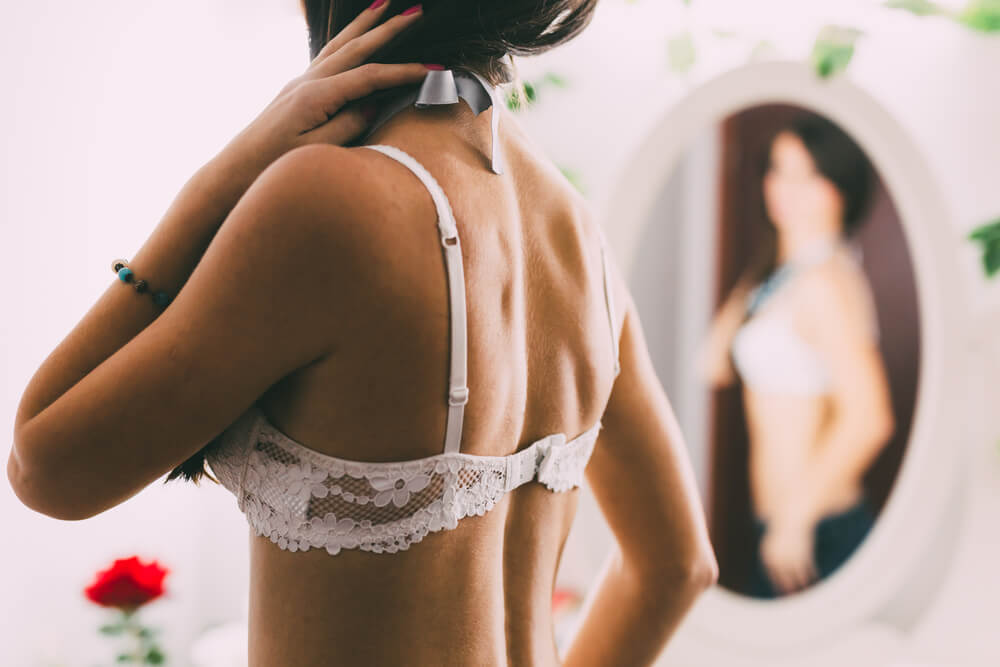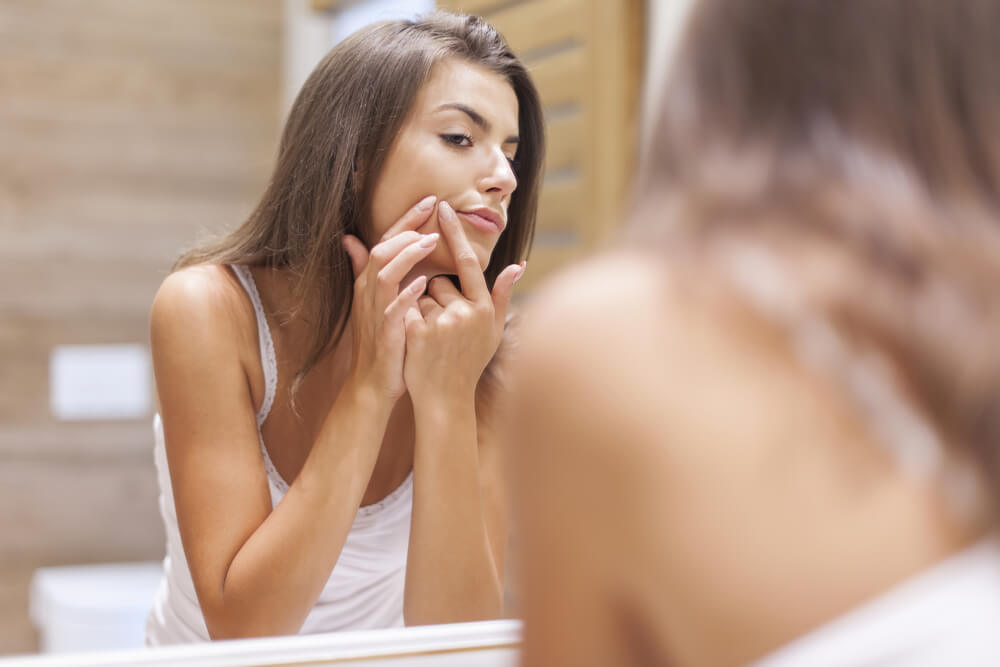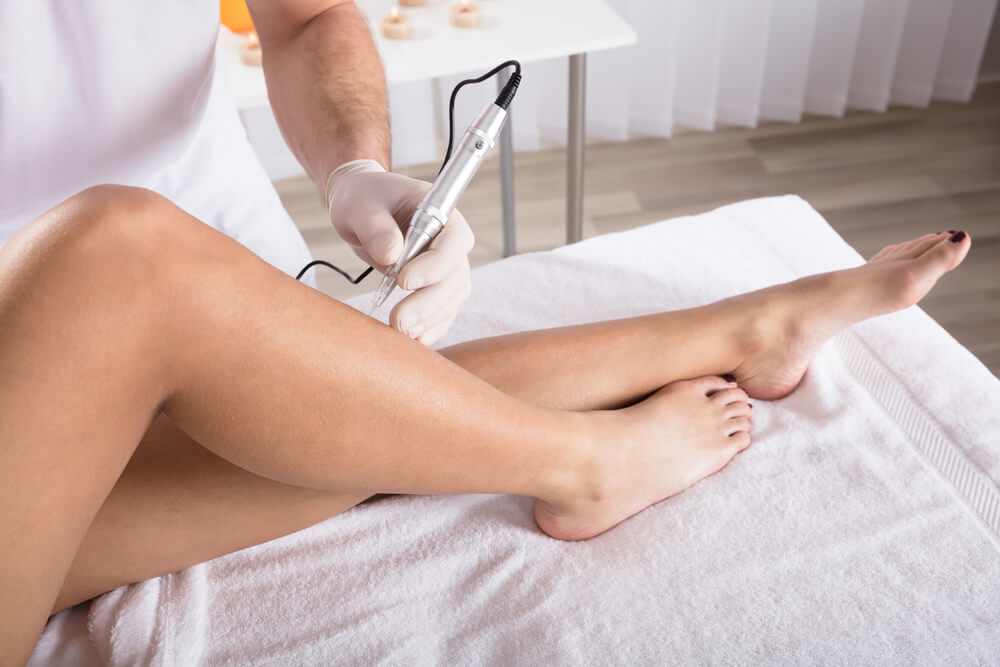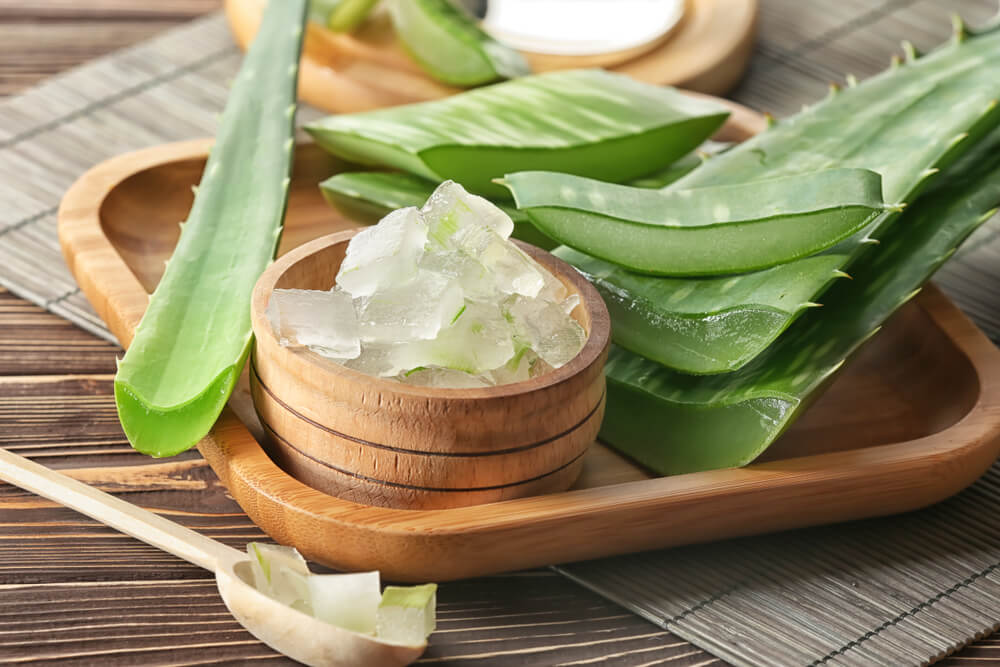Skin Care
How To Get Rid Of Body Acne Scars
Anyone who’s had body acne in the past has likely had to deal with scars from time to time. Whether mild or chronic, even after that area of your acne has long cleared up, the signs remain. Understandably, this can be truly frustrating for many of us and we want to know of any and every possible way there is to get rid of them for good. Sounds like you? You’re in the right place…
What Is Acne Scarring?

Unlike some marks you may find lingering after your acne has passed, acne scars are more permanent when left untreated.
How do you know it’s a scar and not a mark that will fade?
You can identify a scar by the change in texture made to your skin.
They may leave small to large indents in the skin, or, they can simply give off a slightly shinier or darker surface area in comparison to the rest of your complexion. Additionally, if the mark is raised or still present after roughly 6-24 months (since your acne itself cleared up) it’s likely to be a scar rather than a temporary spot of discoloration.
What Causes Acne To Leave Scars?
When acne forms on the skin, it’s usually the result of inflammation within the pores. This can be from the build-up of bacteria, excess oils within the pores or even dead skin build-up. When this happens, the pores within your skin become irritated and grow larger as they swell.
Unfortunately, this can often cause the follicle to become damaged, even broken in some cases. This can result in scars starting to develop. Also, the fact that the follicle is permanently damaged serves as the reason why they can be so tricky to get rid of!
As you can imagine, this happens not only on the face but also on the body. Large areas of skin covered by clothing, for example, can easily be affected. Whether you’re exercising or simply going about your usual daily activities, it’s not uncommon to sweat. Unfortunately, sweat is often a culprit when it comes to body acne!
Why?
We’re glad you asked!
That bacteria, dead skin, and oil build-up we mentioned will thrive in a warm and sweaty environment (lovely, we know!). Therefore, it’s always important to maintain a great hygiene and skincare routine before and after your workouts and at the start and end of the day. Especially when you feel you may have sweated more than usual. This will keep your pores clean and bacteria-free, hopefully, helping to prevent acne (and scars) from forming in the first place.
Another practice that can cause acne scars?
Squeezing your pimples!

We know, the temptation is all too real when it comes to acne. You feel a bump or a sore spot and it seems almost impossible not to touch it or even pick at it sometimes. Well, hopefully, we can help you to stop that right now!
Though it may seem like a quick and easy way to rid yourself of an acne spot quickly, in the long term, it’s a terrible idea. Putting pressure on the skin, especially sensitive acne-prone skin, will inevitably cause skin trauma. The veins and glands close to, and in the surrounding areas of, your acne will become damaged the moment you press or scratch too hard. This can also result in scarring. Therefore, your short term squeezing solution can quickly become a long term scarring problem!
Is It The Same As Post Inflammatory Hyperpigmentation?
The short answer?
No.
PIH (Post Inflammatory Hyperpigmentation) is actually quite different from acne scarring in many ways. Firstly, it’s rarely as permanent as acne scarring can be. Therefore, even without treatment, it can fade away on its own. Usually, you wouldn’t expect PIH to last any longer than two years before fading away completely.
Secondly, hyperpigmentation is the result of the over-production of melanin, a skin pigment that releases in response to the skin becoming injured or inflamed. This results in a darkened area of skin. It’s also why you’ll notice PIH after burning your skin or scratching it too hard.
Acne scars, on the other hand, come in many different forms and are usually the result of picking and scratching. In some more serious cases, it’s actually the overproduction of collagen rather than melanin that causes scarring. But we’ll get to that…
What Are The Different Types Of Acne Scars?
Believe it or not, acne scars actually come in many different forms from mild to severe. Understanding the type of acne scarring you have on your body is important as it’ll help you identify the type of treatment you need much easier!
- Rolling Scars – Rolling scars are one of the more common types of acne scars you’ll expect to find. They appear on the body and on the face too. These scars are rarely more than a few millimeters in width and appear only as shallow indents in the skin.
- Boxcar Scars – Boxcar scars are usually round in shape with verticle edges. They’re also wider than your average ice pick scars though they’re not as wide as rolling scars.
- Icepick Scars – Icepick scars are deep and narrow, they’re pitted scars that are more severe than surface-level ones.
- Atrophic Scars – These scars are a little different from the others in that they’re flatter and are caused differently. Atrophic scars appear when your skin cannot regenerate tissue properly. This causes an imbalance within the skin resulting in scar tissue forming.
- Keloid Scars – Likely the most troublesome of all acne scars, are keloid scars. The reason these are often seen as the most problematic is for the fact that they’re raised above the skin. As the skin heals from the trauma of acne, the body releases excess collagen which results in a lumpy sort of scar which appears to sit on top of the skin.
Like all other acne scars, Keloid scars aren’t harmful, however, some people are uncomfortable with the way they look. Happily, there is a multitude of treatments available to rid the skin of scars such as this.
Medical Treatments For Acne Scars
Even though there are many natural options to consider for acne scar fading, some wish to pursue medical alternatives. This may because they feel they’ve exhausted natural remedies with little or no success. Or, it may be because their scarring is particularly severe and medical treatment has been advised. Either way, we’ve listed below many of the most popular medically healing treatments.
Microneedling

Now, this might sound like an absolute nightmare, and we get it! Microneedling hardly sounds like the most relaxing treatment on the spa menu. That said, if you’re looking to get help with the removal of body acne scars, this could certainly be for you. Plus, it’s not nearly as uncomfortable as it sounds!
Microneedling is also recommended for those with fairly new acne scars as the longer they are left, the more difficult it is to treat them with microneedling tools.
The basic idea of microneedling is to cause mild irritation to the skin to promote the production of collagen. This is responsible for healing and promoting new healthy-looking, and feeling, skin cells. Small needles are rolled over the skin between a length of 0.5mm – 2mm depending on the severity of the scars to be treated.
These needles cause tiny punctures to form on the skin alerting your body to the fact it needs to heal itself. That said, these punctures are so tiny you can barely feel them being created and will hardly notice them after. You may experience a little redness however your skin should not hurt or bleed.
Once this process has been completed, your skin will naturally start to heal the treated areas. This will, in turn, help to heal and resurface the areas once scarred by your acne. What’s more, microneedling is notoriously popular for anti-aging purposes so it’s a real win-win!
Laser Treatment
Those with icepick or boxcar scars are great candidates for laser resurfacing treatment. That’s because, unlike mild surface-level scarring, these types of scars are much harder to treat. They’re therefore unlikely to respond particularly well, if at all, to light treatments such as exfoliation or natural remedies.
Once the scar has penetrated the upper layer of the skin’s tissue, lasers are sometimes the only effective treatment available. Which laser will be most effective for your treatment will then depend on whether you’re hoping to resurface the skin, lighten the effects of the scarring, or both. Your technician will be able to discuss this before carrying out your treatment plan!
Overall, opting for laser skin treatment to even out acne scars will result in a smoother, more unified looking complexion.
Skincare Products
If your acne scars are there but not always entirely visible as they’re only at surface level, there are many cosmetics out there that could aid in your scar fading process. Especially, those containing salicylic acid.
Why?
Let’s take a look…
Salicylic acid is often used within skincare cosmetics to clean away dead skin cells, dirt, and excess oils that can lead to acne in the first place. Additionally, it helps reduce swelling and redness to the areas it’s applied to. Therefore, this can sometimes help to reduce the appearance of indentations in the skin caused by acne scarring.
If it’s hyperpigmentation that’s bothering you, try skincare with glycolic acid and vitamin C. These ingredients help to lighten dark spots that have formed in response to acne and may improve the texture of your skin simultaneously.
Chemical Peels
Another way to introduce these scar reducing ingredients to the skin in a more intense way is through chemical skin peels. This is a common treatment offer by many spas and dermatologists and can vastly improve the appearance and texture of your skin. Whether your scars are on or around your face or perhaps on your arms or back, this can be a highly effective treatment for mild acne scarring.
Natural Remedies For Acne Scarring
Looking for a more natural or lower-cost treatment?
We have your back!
Below, we’ve listed the most popular and most effective natural remedies thought to help with the appearance of body acne scars. From regular hydration to items you’ll likely have in your pantry, these at-home treatments couldn’t be simpler!
Aloe Vera

If you’re looking to drastically alter the texture of your acne scars, aloe vera may not be quite what you’re looking for. That said, this natural, and cost-effective, treatment can really help to improve their appearance in terms of color.
This is all thanks to an element found within aloe vera called, aloesin. Remember how we said too much melanin causes hyperpigmentation making your acne scars more visible? Well, aloesin helps to slow that process down reducing the amount of melanin produced. This, in turn, prevents the scars from appearing darker than they originally were improving their overall appearance!
Water
If you thought drinking water was beneficial for improving acne itself, you’d be right. If you’re wondering if it helps reduce the appearance of acne scars once the spots themselves have gone, you’d be right again!
So how does it work?
Let us explain…
As we drink water, we help to flush toxins out of our bodies. Naturally, this helps to improve the appearance of our skin. However, when you also take into consideration the part that water plays in generating new skin cells, you start to understand how it could possibly help the appearance of stubborn scars also.
When our bodies are hydrated, it’s much easier for them to shed dead skin cells and continue the regeneration process. New cells are also encouraged to grow a lot faster and a lot healthier when we’re adequately hydrated. Therefore, making sure you get your 2 liters a day may not rid your body of acne scars altogether but you may just start to notice an improvement.
This alongside being properly hydrated daily and helping to prevent the start of acne in the first place seems like an easy ‘yes’ to us!
Lemon Juice Or Honey
Forget sniffly noses, we’ll be using our honey and lemon juice to treat our acne scars in the future thank you very much!
If this sounds a little too good to be true, we understand. How could two such simple ingredients help to rid your skin of acne scars? Well, the truth is, it might, and it might not. It all depends on the severity of the scarring and how your skin responds. That said, both honey and lemon have been known to help reduce light acne scarring, and the science behind how is pretty simple!
Whilst lemon juice has antiseptic and inflammatory qualities that may reduce mild swelling, honey is naturally healing thanks to its antibacterial content. Though unfortunately, these remedies can’t cure pitted or raised scars, they may help to improve the appearance of less noticeable ones.

